In a perfect world, your IT team would propel your business forward, acting as a vital force that enhances agility, intelligence, and security. Ideally, IT would work in lockstep with business objectives, transforming technology into a strategic advantage.
However, the reality for many organizations is far from ideal. Business teams often attempt to innovate and drive growth, only to face bottlenecks caused by IT departments more focused on maintaining infrastructure, enforcing security protocols, or prioritizing internal projects that don’t seem to align with broader business objectives.
This disconnect can harm productivity, dampen employee morale, and lead to missed revenue opportunities. To succeed in today’s fast-paced business environment, aligning IT with business strategy is no longer optional—it’s essential.
Understanding the Misalignment
In many businesses, IT and business leaders work in separate silos. The business team focuses on delivering customer value, driving innovation, and achieving revenue goals. Meanwhile, the IT side is geared toward ensuring system reliability, addressing support tickets, and minimizing risk through cybersecurity measures.
While both groups aim to contribute to organizational success, their differing priorities often result in conflicting goals. Common signs of misalignment include:
– Project delays due to misunderstood requirements or unclear communication
– Emergence of shadow IT as departments adopt unauthorized tools to meet needs
– Finger-pointing when tech initiatives fall short
– Investments in technology that fail to meet business expectations
– Employee disengagement due to inefficient systems or processes
Why the Disconnect Exists
This misalignment isn’t usually due to incompetence. Most often, it stems from a failure to recognize IT as a strategic partner rather than just a support department. Many organizations are still operating with outdated views, where technology supports day-to-day needs but doesn’t drive long-term value.
Several factors contribute to this gap:
Lack of Communication: Business leaders often don’t explain the “why” behind initiatives in terms that IT interpreters can use effectively, while IT may not articulate its challenges in relatable business terms. This lack of shared language breeds misunderstanding.
Conflicting Priorities: Business groups move quickly to capitalize on market opportunities, while IT tends to prioritize operational stability, data security, and system performance. Without shared KPIs or clearly aligned initiatives, these differences cause friction.
Limited Understanding: Business units may not understand the complexities of implementing new technologies or maintaining infrastructure. Likewise, IT may underestimate the urgency of market demands. This disconnect leads to decisions being made in silos, reducing effectiveness.
Resource Constraints: IT teams are often stretched too thin, managing both maintenance and innovation without adequate funding or staffing. And when viewed solely as operational rather than strategic, they may not receive the investment required to support broader organizational goals.
What Businesses Need from IT
To bridge the gap, IT departments must evolve. It’s not just about uptime anymore—it’s about outcomes. Modern businesses need IT to be a strategic advisor that recommends scalable solutions, streamlines workflows through automation, enhances data insights for decision-making, and delivers secure, efficient experiences for both employees and customers.
IT should help the business accelerate toward its goals, not hold it back.
Steps to Drive Alignment
Creating synergy between IT and business units takes effort, but the payoff is worth it. Key actions include:
Align on Shared Goals: Clearly define success in mutual terms, tying IT efforts to tangible business outcomes. Establish performance metrics that both IT and business leaders can measure and work toward collaboratively.
Encourage Ongoing Communication: Schedule regular strategy and progress meetings between IT and business leadership. Include IT voices in key planning discussions to foster better mutual understanding.
Empower IT Strategically: Position IT as a business enabler. Ensure IT leadership understands your core business model and has input in shaping organizational direction.
Fund IT Appropriately: Equip your tech teams with the resources needed to support both maintenance and innovation initiatives. Treat IT as a growth investment, not just a cost center.
Build a Shared Roadmap: Create a co-developed IT roadmap that outlines strategic investments in technology and how each supports core business objectives. This blueprint keeps all departments aligned and accountable.
The Cytranet Approach
If your business team often feels like it’s working against your IT team rather than with it, it’s time to re-evaluate your alignment.
When IT acts as a partner instead of merely a service provider, momentum shifts. Strategic vision, proper structure, and collaborative leadership enable IT to become a true catalyst for growth.
At Cytranet, we believe in turning IT from a source of frustration into a force for strategic advantage. Our Fractional CIO approach begins with understanding your business goals before recommending any technological changes. We then create a clear, actionable IT roadmap that aligns perfectly with your strategic priorities—offering continuous guidance along your journey.
Let Cytranet show you how transformative aligned IT can be. Schedule a meeting today to explore how we help integrate business insight with technology excellence.


